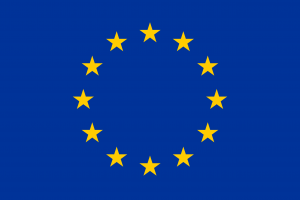Remarks of the EU Ambassador at the Handover of the Solar Panel Installation at the Main Ridge Forest Tourist Orientation Centre, Tobago

[SALUTATIONS]
It is indeed a pleasure to be here today and to witness the incredible progress that has been made by the UNDP on this GCCA+ community solar panel installation project. It is particularly meaningful that this installation is part of the Tobago Main Ridge Forest Reserve, which is the oldest legally established and protected reserve in the Western Hemisphere.
I am also advised that this site of the Bloody Bay Recreation Visitor Centre, was established some 245 years ago, and is an integral part of the agricultural production and forestry resource of the island.
So, we are really pleased to be able to contribute in a meaningful way, not only to its environmental preservation, but also to the lives and livelihoods that will benefit from this installation.
This site is also a perfect example of the way that renewable energy in general – and solar power in this instance – can be harnessed to bring benefit to the many communities that are unable to access the national electrical grid. The solar installation being inaugurated today will provide essential electrical power for lights, computers and the concession stand that otherwise would be unable to function due to a lack of power.
It is satisfying to be in the Tobago Main Ridge and to see the solar panels on that roof knowing that they are contributing to a brighter outlook for future generations!
Let me now offer a bit of background on the project itself and the EU’s involvement:
The community solar panel project is part of a larger renewable energy programme for Trinidad and Tobago and is funded by the Global Climate Change Alliance Plus (GCCA+). GCCA+ is a European Union flagship initiative aimed at helping the world's most vulnerable countries to address climate change. This initiative is particularly oriented towards Small Islands Developing States (SIDS) like Trinidad and Tobago, which are among the nations more exposed to the negative impacts from climate change.
The Bloody Bay installation is a collaboration of the EU with the Ministry of Planning and Development and the Ministry of Energy and Energy Industries, with the United Nations Development Programme (UNDP) as the implementing partner. It is one of 12 small-scale solar installations that the EU has funded, and UNDP has executed, in T&T at an overall cost of 16 million TT dollars. All 12 solar photovoltaic (PV) installations were put in place in 2022 after being selected through competitive bidding from among 167 proposals.
We expect that this solar photovoltaic (PV) system will help the Bloody Bay Centre to better serve visitors and the community. Indeed, the members of the Bloody Bay Tour Guide Association stand at the ready to be a catalyst for the adoption of solar energy by sharing information on the benefits of renewable energy and energy efficiency.
This particular 15 kWh photovoltaic system has the capacity to generate an estimated annual energy production of 25.000 kWh and will help avoid some 16 tons of CO2 emissions.
This GCCA+ project also provides maintenance training, skills training and upgrade to local technical teams. The 12 sites have already undergone technical inspection for system compatibility and safety specifications, including inspection results that fulfilled all local authority requirements.
Also included in this GCCA+ programme is an awareness campaign to help sensitize the public about the benefits, accessibility, correct pricing, and affordability of solar power as a source of clean, sustainable, and renewable energy.
I am sure you may have also heard about the solar park that is currently under construction at the Piarco Airport. This additional GCCA+ project is managed by the Airports Authority of Trinidad and Tobago, and is an important component of EU’s overall support to this country’s transition to renewable energy. Ground-mounted solar panels will be installed with an annual generation capacity 0.5 MW and a minimum annual generation capacity of 767,034 kWh and the potential to avoid approximately 500 metric tonnes of CO2 emissions annually. The premise of the project is to further effect a 20% reduction in CO2 emission from aircraft operating in Trinidad and Tobago, by switching some 4% of the consumed electricity by AATT, from the grid to a renewable source – in this case solar PV.
It is the EU’s profoundest wish that the initiative begun with these 12 community installations will spread and transform the energy landscape of Trinidad and Tobago, as more and more people see the benefit and convert to renewable energy.
Let me offer my thanks to the UNDP for a job well done. To the Government and people of Trinidad and Tobago I wish to assure you of the EU’s continued support to meet your green energy objectives.
THANK YOU!
